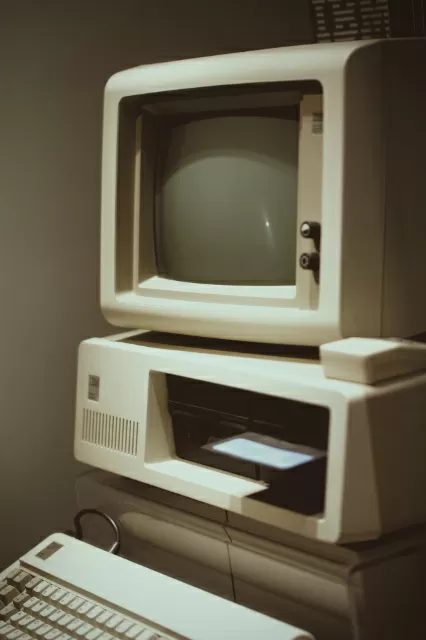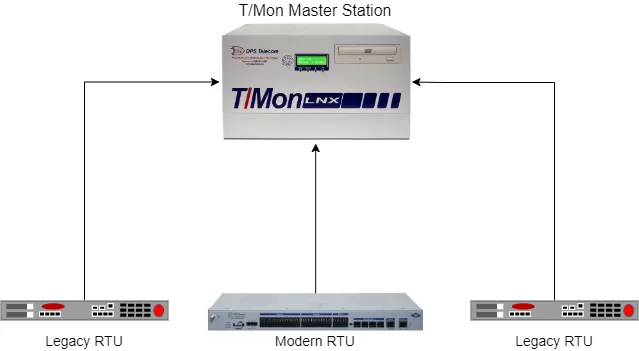Check out our White Paper Series!
A complete library of helpful advice and survival guides for every aspect of system monitoring and control.
1-800-693-0351
Have a specific question? Ask our team of expert engineers and get a specific answer!
Sign up for the next DPS Factory Training!

Whether you're new to our equipment or you've used it for years, DPS factory training is the best way to get more from your monitoring.
Reserve Your Seat TodayLegacy devices are any piece of hardware or software that was once widely used but now has been replaced with something newer. Age doesn't necessarily indicate that a system is a legacy. It can be considered outdated because a newer version has been released and the vendor doesn't support the first version anymore.

It's no secret that trying to keep a network running on legacy devices in a modern world is not the best practice.
Network problems due to older device limitations are not a matter of "if", it's a matter of "when" and "how". Despite that, many companies often struggle to transition from a legacy remote monitoring system to a more updated one, with newer technology and devices.
Let's take a look at some of the mindsets network managers usually have and why replacing legacy gear is still the best idea.
In most cases, network managers resist replacing decades-old monitoring devices partially because they seem to still be working. Is that your case? Are you wondering why should you replace RTUs or other pieces of equipment that have served you well for this long?
The truth is working with old and outdated monitoring systems can cause serious problems to your network.
Legacy systems are vulnerable to security breaches and other security threats. Even though your old system was a state-of-the-art technology when it was bought and installed, technology and cybercrime have advanced, so it's now difficult for legacy devices to keep up. As your current devices approach the end of their lifespan, the greater are the chances of security and availability risks.
Where cybersecurity is concerned, outdated systems are a perfect target for hackers.
Also, keep in mind that your legacy monitoring equipment might still remain operational until the end of their normal lifespan. But until they finally die, they will keep presenting issues. And, there's no guarantee that your vendor is still supporting - let alone manufacturing - your old devices. You might find out that you're on your own.
Think about all the ongoing money (and time) you are spending on service and maintenance for your increasingly obsolete monitoring system. This money would be better spent if you could use it for equipment investments and upgrades.
Some companies come to a point where they're spending more money to maintain their legacy monitoring systems than they would if they had upgraded everything in the first place.
Transitioning away from legacy devices will reduce your total cost of ownership. Newer monitoring technologies are more efficient and more reliable, they will help you reduce expensive network downtime that affects your bottom line.
Do not let the upfront costs of modern equipment scare you. Most of the newer monitoring devices are developed with scalability in mind, making it easier than ever for your system to adjust to changing capacity needs.
This means that you will be able to do more with fewer devices. So, even though the initial investment is high, you won't have to keep buying new devices to keep up with your growing network.
When you consider all of this, does it make sense to keep an obsolete monitoring system just because you want to save a little money now?
There's a myth that firmware upgrades are the solution to legacy challenges. This type of approach can seem more affordable from the outside, but it will end up costing more in the long run. Your monitoring system will not be totally optimized, which will lead to inefficient performance and alarmingly low visibility over your network.
Firmware upgrades are one of the best practices to maintain your system updated, but this is only true if your hardware is not already old. A firmware update can't overcome obsolete hardware limitations.
In those cases, firmware upgrades on old hardware is simply a Band-Aid that will not address the real issues. Instead, they often create problems with integration and communication/visibility. And those problems can lead to outages and security vulnerabilities.
Legacy hardware is a difficult issue to handle. Outdated devices will struggle to keep with the demands of modern networks, creating a bottleneck for your processes and operating capacity.
This is considering that your vendor does still offer firmware upgrades for your type of device. Upgrades might be sparse, or not even forthcoming at all.
If your legacy monitoring system is prohibiting you from using new, advanced capabilities, chances are your competitors are. This means that when your old system doesn't prevent a network outage, you'll lose not only revenue but clients as well.
Replacing older devices, however, is easier said than done. There are many factors that play into this decision, such as budget approval, engineering resources, training, etc. That's why you need an efficient plant that will help you with that.
At DPS, we think that, although replacing legacy equipment is the industry's best practice, you don't want to throw away the investment you've made and simply discard equipment that still works.
Instead of getting rid of all your legacy monitoring devices at once, it's essential that you can find a solution that will integrate well with the current devices you have. You need a device that will allow you to slowly replace your equipment over a course of a few years and avoid blowing your budget.
For that, all you need is a T/Mon LNX master station. With it, you don't have to replace a single RTU if you don't want to. You'll immediately have reliable and more efficient polling of your current devices.

The T/Mon LNX is a modern, multi-user, and multiprotocol alarm master that was uniquely designed as a single platform for all the monitoring equipment in your system. It supports multiple different types of devices, independently of manufacturer or communication protocols.
You'll also gain all the modern features of T/Mon, including:
As a multiprotocol master station, T/Mon is able to support even the older RTUs that are no longer supported by their own original manufacturers. It will improve your network's security, availability, and performance issues of your outdated legacy system.
This is a modular solution that will let you replace your old gear in phases, making the budget investments more palatable. For example, your legacy RTUs transition might be done by buying one new device at a time, allowing the transition process to be managed on a schedule that fits your business budget and timeline, but still resulting in a modern and efficient monitoring system.
T/Mon will allow you to strategically modernize your network over time through a series of well-planned RTU investments instead of having to buy all new equipment after equipment failures happen. This process is minimally disruptive to your operations and budget, and the end result is much more efficient than a complete swap out of all your devices.

In our many years in the industry, we see a common thread - network managers are unaware of the benefits of modernization or they think the only way to achieve that is by replacing all their devices at once.
If you have legacy devices, you probably know that:
A modern monitoring system will solve all these issues, but you need a good migration plan.
A controlled migration to advanced monitoring technologies is the best plan in order to be successful, and it doesn't require you to invest all your budget (and more) to have a modern network monitoring system.
By investing in the T/Mon master station, you'll be in a smooth and organized path towards the future. It'll allow you to have an open-ended upgrade path for the future that will free you from dependency on your legacy system. You can add new RTUs with new capabilities into your system as you need them, expand your monitoring system as your network grows, and never worry that a hardware breakdown will cause a network monitoring outage.
To talk to our experts about how this migration solution would work in your specific scenario, just send us a message.

Morgana Siggins
Morgana Siggins is a marketing writer, content creator, and documentation specialist at DPS Telecom. She has created over 200 blog articles and videos sharing her years of experience in the remote monitoring industry.